Globally some 2 billion of us live in a city of more than 500,000 inhabitants.1
A number that is progressively growing.
But what does "city" mean?
Not lexicographically, but physically, culturally, socially, politically, economically, morally, etc, etc, etc?
With the exhibition Die Stadt. Between Skyline and Latrine the smac – Staatliches Museum für Archäologie Chemnitz attempt to approach possible answers......
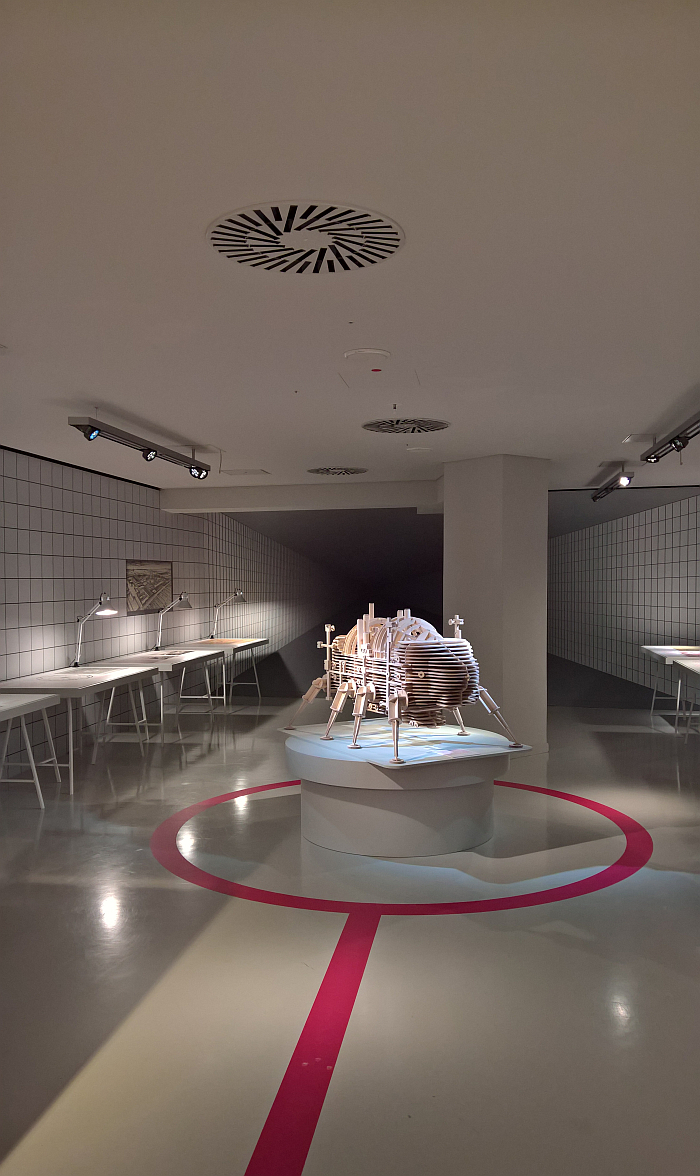
Die Stadt. Between Skyline and Latrine2 is, or perhaps more accurately, can be understood as, the exhibition the smac, Staatliches Museum für Archäologie Chemnitz, has discretely, yet very publicly, been signalling it intends to present since its opening in 2014: the central staircase in Erich Mendelsohn's 1930 Schocken department store which today houses the smac being accompanied on its way up from the ground floor to the fourth, where temporary exhibitions are held, by a profile, a Lackprofil, a lackfilm/sedimentary peel, to remain in archaeological registers, which presents an impression of the earth under our feet over a time span from some 20 million years BCE to today; a Lackprofil which elucidates just how long the earth was peacefully alone with itself before humans arrived to spoil the party; a Lackprofil atop of which stands the thinnest sliver containing artefacts of human civilisation, specifically artefacts of urban civilisation. A Lackprofil which means that since 2014 the higher one has climbed in the smac the closer one has approached the city.
With Die Stadt. Between Skyline and Latrine one reaches that city.
But what is a "city"?
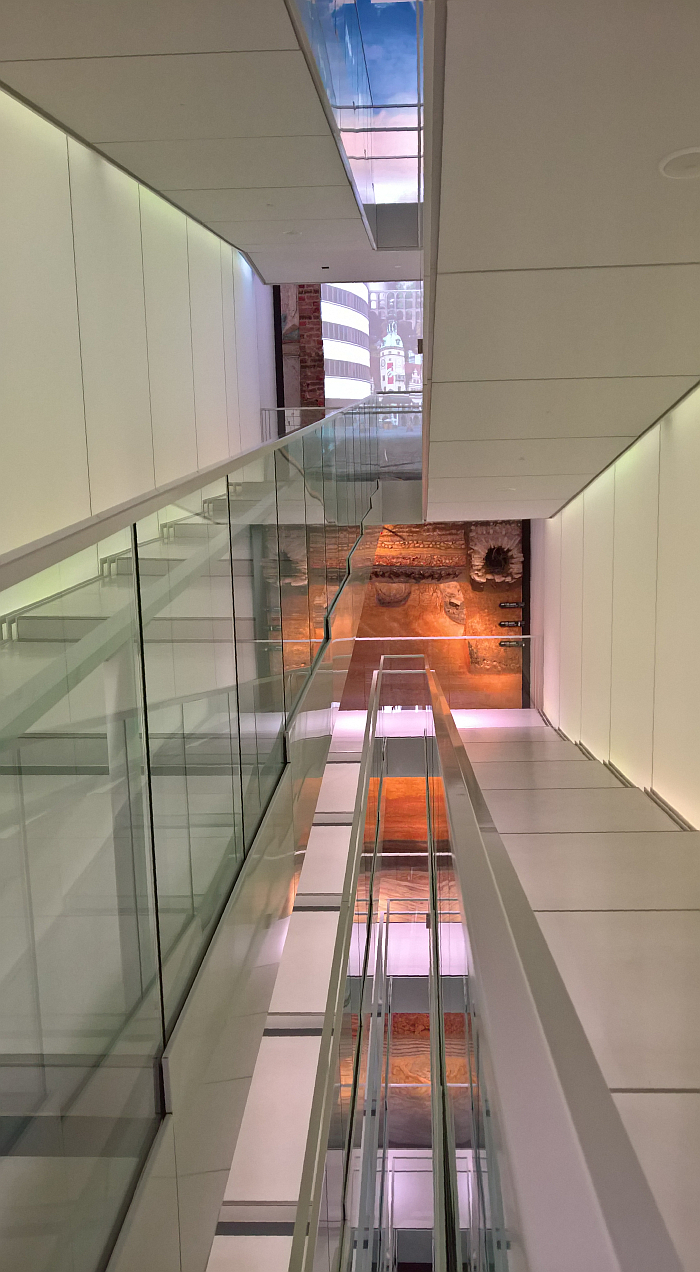
In context of rural locations the Swiss sociologist Lucius Burkhardt advances the position that the "countryside" as such doesn't exist, rather, he argues, we have images of what any given "countryside" area should be, largely romantic idealised images, and when reality matches theory, when the vista we have before us is the same as that promised in the tourist brochures, guide books, Instagram #s etc, it is beautiful. And when it doesn't, its not, it has been spoiled. Invariably by the ignorant locals who didn't/don't understand what they have/had.
Similarly the opening chapter of Die Stadt develops an argument that any city is rarely that which it is but that which we understand it to be. For locals "their" city is a limited image based on their personal interactions with and experiences of the city; for non-locals any city is invariably a medial mediated image, a complex entity reduced to a few easily digestible components, not just the skyline of the exhibition's title as defined by a restricted number of prominent structures, but also particular locations within and views through/from/of the city become representative, authoritatively so, for the city, its (hi)story, its character, its inhabitants, its relevance.
Expanding on such an understanding Die Stadt also develops an argument that any city is rarely that which it is but that which we understand it could, should, must? be: the opening chapter presenting a number of idealised visions of a "city". A presentation of literary visions such as Aristophanes' 5th century BCE comedy The Birds with its creation of Cloud Cuckoo Land, Christine de Pizan's Le Livre de la Cité des Dames from 1405, Thomas More's Utopia from 1516, or the former German TV soap opera Lindenstrasse, a fiction based in an idealised Munich. As is Oktoberfest. And also a presentation of architectural visions, primarily unrealised architectural visions including Filarete's 15th century plan for the city of Sforzinda, Le Corbusier's Plan Voisin from 1925, Frank Lloyd Wright's 1932 Broadacre City but also the, more or less, realised Auroville in India, a self-proclaimed "Universal City" established in the 1960s by devotees of a spiritualist community.
A presentation of literary and architectural visions which in its movement from ancient to more contemporary examples very neatly introduces the exhibition design concept of chronological discussions of its various themes; a presentation concept which aside from enabling differentiated perspectives on those themes and their relationship to cities and urban civilisation, also helps elucidate that whatever we think is contemporary is largely a contemporary version of something long established. Which is something we all need to be reminded of on a much more regular basis than we are.
A presentation of literary and architectural visions physically dominated by a model of Archigram's 1964 Walking City, a proposal for a self-contained community of 20,000 inhabitants which, when required and/or desired, could walk off and set itself down somewhere new. Which, no, isn't a good idea. But remains as excellent and pertinent a conduit for reflection on the city as it ever was
A presentation of literary and architectural visions which helps one approach an appreciation that literary and architecturally idealised cities are but little different from the medial mediated images of our actual cities; not least in that they also tacitly ignore various fundamental, unignorable, aspects.
And a presentation of literary and architectural visions which allows one to better appreciate that for all a city is something mediated, imagined and/or projected, a city is also a tangible reality and an intangible reality, that alongside asking what is a city?, one must also ask why is a city? How is a city? Wherefore is a city? That while developing an imagined, theoretical, idealised, globally marketable, city is a relatively straightforward task, developing an actual city is a much more complex business.
A complex business exemplified by the latrines and skyline of Die Stadt's subtitle.
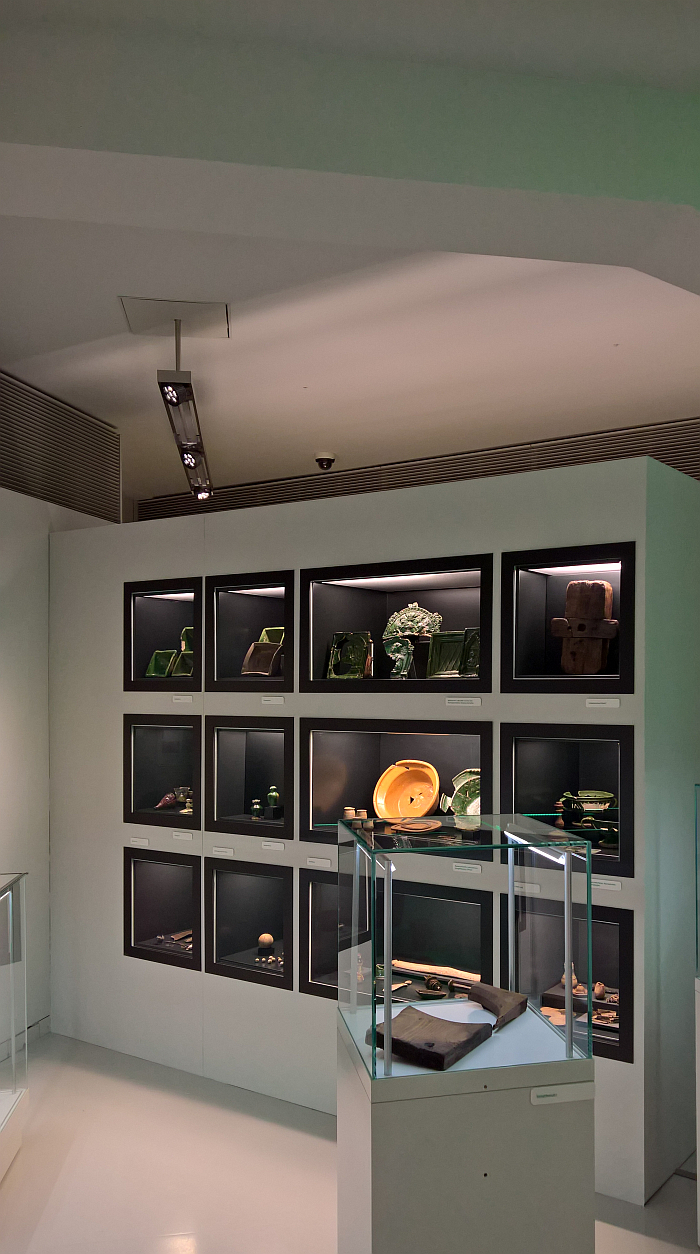
Latrines and skylines which, for the curators, represent two definers, two key aspects, of the agglomeration and densification inherent in the development of cities; and latrines and skylines which also represent the tangible and intangible reality of a city.
The skyline as a representative of the tangible city, of a city as a built environment, a built environment Die Stadt explores via chronological tours through subjects as varied as building materials, urban planning or transport/communication/infrastructural networks, those networks which enabled cities to establish themselves, those networks whose technical developments over the centuries have been so fundamental in allowing cities to develop and expand, which enabled our contemporary (mega)cities; networks on which any urban space relies for its continuing functioning and networks whose importance we often only fully appreciate when they cease to function. For when they cease to function, so does the city.
The latrine as a representative of the intangible city, less the latrine itself, although without effective sanitation there would be no cities, and much more the discussions latrines enable of a city as a cultural environment, a cultural environment Die Stadt explores via chronological tours through subjects as varied as the city as a location of production, trade, consumption; the city as a location of amusement, misdemeanour, crime; the city as a location of freedom, control, compromise; the city as a location of rules, structures, institutions; the city as a location of individuals, community, coalitions. The city as a myriad things simultaneously and which expresses itself in the question of Die Stadt's final chapter........... Wem gehört die Stadt?
To whom does the city belong?
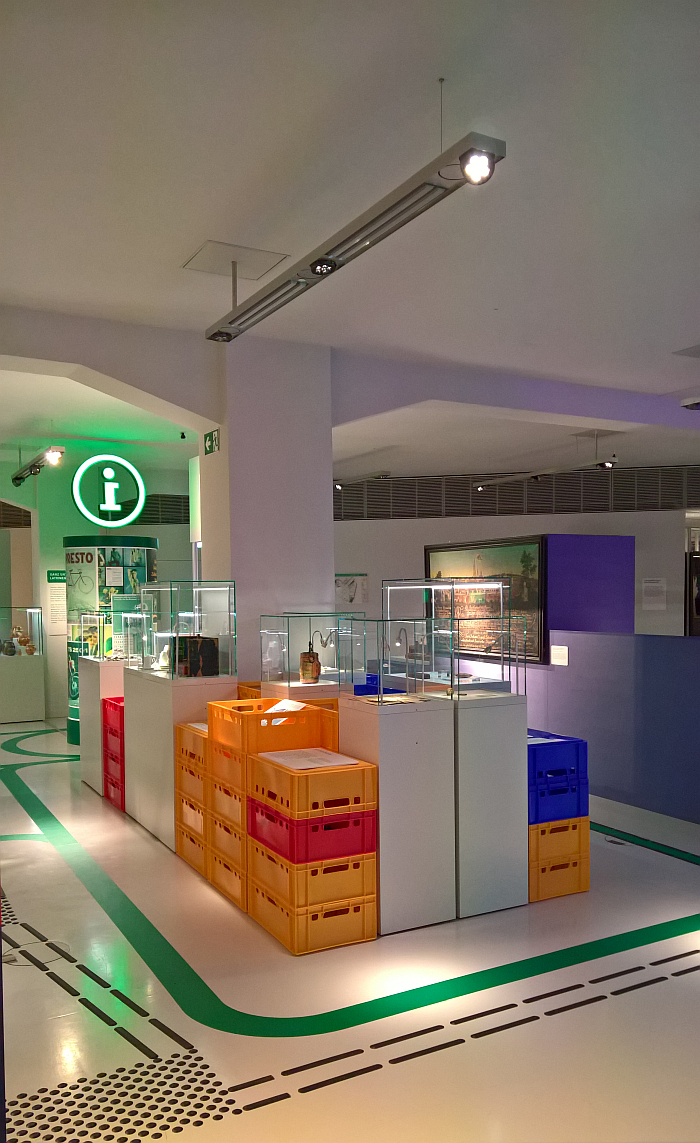
Having viewed Die Stadt the only answer you logically can arrive at is no-one.
Not only is any city, as Die Stadt eloquently discusses, the ongoing result of the contributions of all those who have been associated with it over the duration of its existence, but, and at the risk of sounding like an advert for a very expensive watch, a city isn't something one owns but is something one has guardianship of for a brief period. The city existed before you showed up and will continue to exist long after you've shuffled off this mortal coil.
As such, any city must be considered a common good.
And whereas back in the day one could argue they were, not least because so many individuals were, as if by by nature defined, and without dissent, excluded from the business of and decisions surrounding any city and as such were simply denied their share of that common good; as societies, and by extrapolation cities, have become ever more complex, so has the task of balancing the many and varied interests in any given city. A complex task made even more difficult as over the centuries political power has increasingly shifted from being something one contributed to, to something one seeks and which, once acquired, one defends. Including (mis)using your political power to keep you in power.
Meaning that, and as Die Stadt helps elucidate, conflicts are as inherent a component of any city as its latrines and skylines, that as much as being a built environment and a cultural environment, any city is also a contested environment.
And in doing so helps one appreciate that going forward, not least against the background of the ever larger, ever more complex, cities we're busily developing, the potential for conflict within our cities is likely to increase, intensify and (with increasing regularity) inflame.
Which means......???
Die Stadt doesn't approach that question, but does underscore not only the importance of considering it, but for all the urgent importance of considering it in all its glorious complexity.
Something it can do because of the perspective it takes......
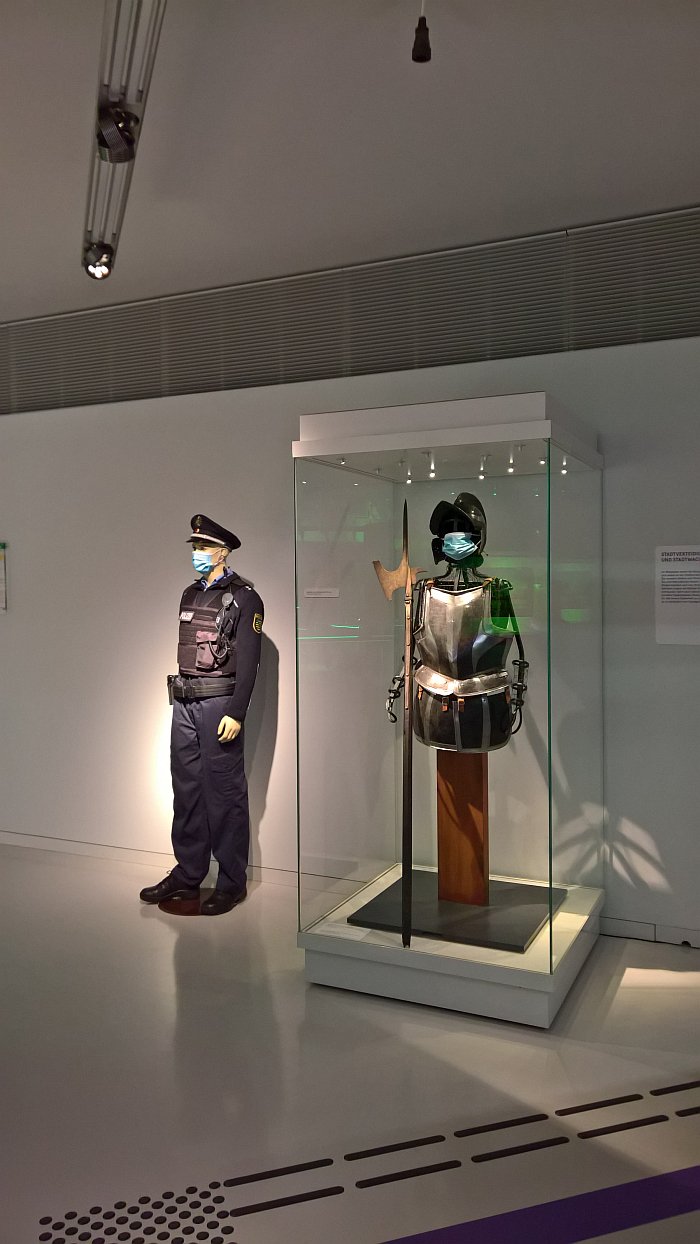
.....that of an archaeologist.
We're all well use to the contemporary city being explained by, and the future city defined by, architects and urban planners and thus from the perspective of architects and urban planners.
And we rarely question if that is the optimal perspective.
Yet, what, for example, could the anthropologist add to discussions on the city past, present and future?
What, for example, could the linguist add to discussions on the city past, present and future?
What, for example, could the ecologist add to discussions on the city past, present and future?
What, for example, could the politician add to discussions on the city past, present and future?
What, for example, could the archaeologist add to discussions on the city past, present and future?
Die Stadt very satisfyingly answers the latter.
Very satisfyingly helps one appreciate that for all a city is, as the Oxford English Dictionary tells us, "a town or other inhabited place"3, any city is also its rituals, its scars, its transport systems, its economics, its flora and fauna, its dens of iniquity, its artefacts, its reputation, its streets, its smells, its inhabitants, its schools, its rumours, its conventions, its colours, its noises, its historically rooted inter-related inter-dependencies, its possibilities.
Very satisfyingly helps one appreciate that because any city is multi-faceted and in constant flux it can never be fully understood in the now; one can but understand how the city arrived at where it is and attempt to draw the best possible map forward. While all the time being aware you can't.
Very satisfyingly helps one appreciate that any city is a so-called Wicked Problem, a situation that has no definitive solution but only a series of options that are all to varying degrees and in varying regards imperfect.
And for all very satisfyingly helps one appreciate that any city, and contrary to a popularly held belief, doesn't arise organically, any city isn't a natural manifestation that could have arisen in no other form and with no other character, but rather humans create the city. In our image.
Which, yes, is, possibly, one of the major problems of contemporary and future cities.
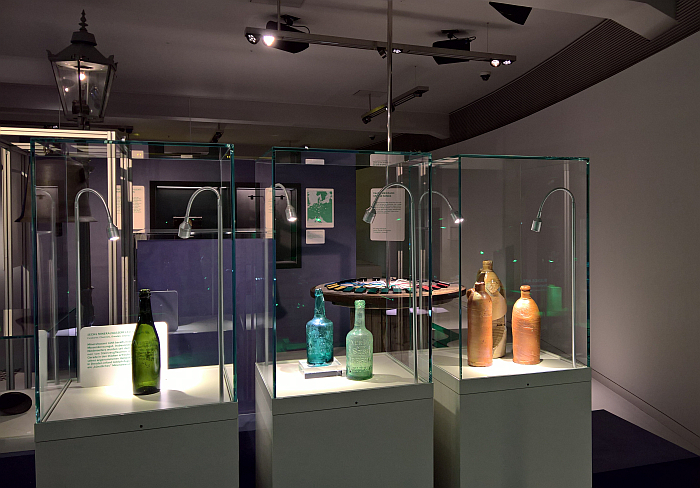
An informative, entertaining and instructive exhibition which pleasingly mixes international examples with local sächsische examples, if we did have one complaint it would be that it is a German only exhibition, which, as ever, we appreciate is a curious and potentially unfair complaint of an exhibition staged in Germany; however, not only will Chemnitz be European City of Culture 2025, a tenure that by necessity demands a degree of bilingualism beyond the inherent German/Sächsisch of the city, and you can never start practising early enough, but also, and primarily, as an exhibition Die Stadt has a lot to offer an international audience.
On the one hand, Die Stadt very neatly helps one appreciate that for all archaeology, by necessity, deals with the past, for all that archaeology is something that must be dug out the Lackprofil below our feet, it isn't only about the past, is also very much part of today, that archaeology is, can be, must be, an important component of our considerations on the present and future.
On the other hand, Die Stadt elegantly helps one appreciate that while "a city" is a construction, as in something identifiable that has developed in context of a unique series of events, "the city" is universal and a consequence of the technical, economic, philosophical et al developments of human society, and that understanding cities involves understanding, and manoeuvring in context of, that distinction.
While on all the all too rare, and thus particularly valuable, third hand, Die Stadt encourages us all to seek a more probable definition of any city, be that one we claim to be familiar with or one we are visiting for the first time, to look beyond that which you thought it was, beyond the mediated/projected/imagined, beyond the skyline and latrines, and to do so because, as Die Stadt helps one appreciate, cities are in many regards an animated 3D Lackprofil of the technical, cultural, social, political, economic, moral, etc, etc, etc developments of the times they've lived through, and as such cities and their artefacts make the (hi)stories of the developments of human society in any given urban location accessible and intelligible, with all the lessons that contains for human society as we move forward.
Or can contain, if we learn to read them.
Die Stadt. Between Skyline and Latrine is scheduled to run at the smac – Staatliches Museum für Archäologie Chemnitz, Stefan-Heym-Platz 1, 09111 Chemnitz until Sunday September 26th.
Full details (German only) can be found at www.smac.sachsen.de/die-stadt
And as ever in these times, if you are planning visiting any exhibition please familiarise yourself in advance with the current ticketing, entry, safety, hygiene, cloakroom, etc rules and systems. And during your visit please stay safe, stay responsible, and above all, stay curious……
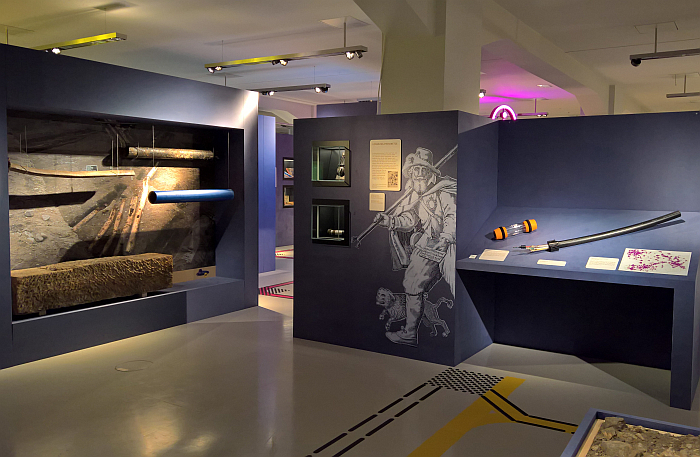
1United Nations, The World’s Cities in 2018. Data Booklet. Available via https://digitallibrary.un.org/record/3799524 (accessed 20.08.2021) Also approaches the complexity of a lexicographical definition of "city"
2"Die Stadt" is German for "the city", we've decided to keep Die Stadt simply for reasons of readability....
3Amongst other descriptions, see, for example, https://www.oed.com/oed2/00040530 (accessed 20.08.2021)